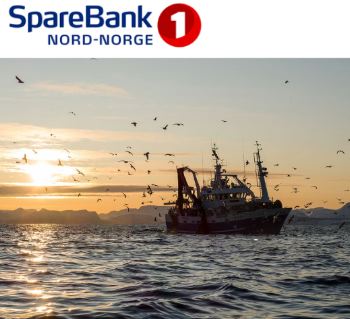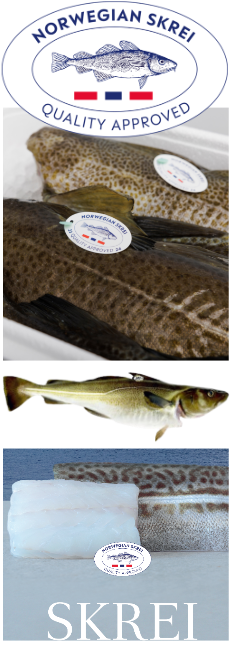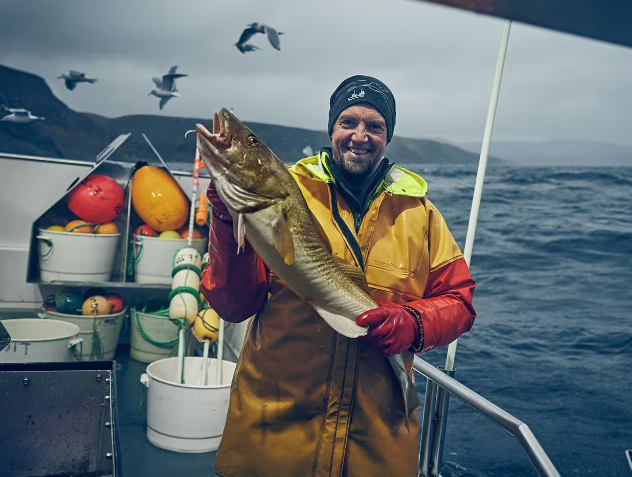|

Photo: kommunikasjon.ntb.no
What Will We Have if Cod Fails Us?
 NORWAY
NORWAY
Friday, January 10, 2025, 22:00 (GMT + 9)
For thousands of years, the skrei—a migratory cod—has journeyed over 1,000 kilometers from the Barents Sea to spawn along the coast of Northern Norway. This remarkable fish has been the lifeblood of the region, sustaining its people and economy for centuries.
Now, as the 2025 skrei season begins, the question looms: what does the future hold for this vital industry?
 Martin Olsen, Director of Corporate Market Relations at SpareBank 1 Northern Norway, reflects on the challenges ahead. Martin Olsen, Director of Corporate Market Relations at SpareBank 1 Northern Norway, reflects on the challenges ahead.
Cod in History: A Foundation of Prosperity
Archaeological evidence suggests that stockfish exports from Norway predate the Viking Age. According to Egil’s Saga, Torolv Kveldulvsson sailed cod from Lofoten to England in 875, underscoring the historical significance of this resource.
Stockfish not only fed the Vikings but also financed their expeditions, enabling conquests and trade. Upon landing, Viking sailors exchanged fish for goods, capitalizing on the superior quality of Lofoten's stockfish—a result of ideal drying conditions and the timing of the skrei migration.
By the 11th century, Bergen had become one of Northern Europe’s largest trading hubs, largely due to its stockfish trade monopoly. This lucrative commerce even funded the construction of Nidaros Cathedral, a testament to cod's enduring value.
The late parish priest of Alstahaug, Petter Dass, has also described the important raw material:

The 2025 Skrei Season: A Pivotal Moment
 This year’s skrei season officially began on January 2nd, with the first hauls packed and shipped. However, the industry faces significant challenges: cod quotas for 2025 are at their lowest since 1992, halved over the past three years. Scientists project further declines in 2026 before a hopeful recovery in 2027. This year’s skrei season officially began on January 2nd, with the first hauls packed and shipped. However, the industry faces significant challenges: cod quotas for 2025 are at their lowest since 1992, halved over the past three years. Scientists project further declines in 2026 before a hopeful recovery in 2027.
Media outlets have been flooded with concerns from politicians, mayors, and industry leaders about the potential crisis for coastal communities. But will the situation be as dire as predicted?
Impacts and Strategies
The quota reductions will undoubtedly affect both fishermen and the fishing industry. Fishing, by nature, is cyclical, with fluctuating stocks and prices. The last decade has been favorable for whitefish industries, characterized by strong earnings, low interest rates, and a favorable exchange rate.
While reduced quotas mean fewer catches, fishermen have seen record-high prices, which helped maintain catch value. Prices are expected to rise further in 2025, though likely insufficient to fully offset the quota cuts. External factors such as European market conditions and exchange rates will also play a role.
For land-based facilities, the impact is more complex. The reduced quotas have intensified competition for raw materials, driving up prices. Conventional sectors like stockfish, salted fish, and clipfish are likely to capture a larger share of the available cod. Unfortunately, many companies already struggling with low profitability may face an even tougher year. In the worst-case scenario, vulnerable fishing municipalities could see bankruptcies and closures, potentially leading to job losses and broader economic ripple effects.
To mitigate these challenges, the industry must focus on efficiency and value creation, such as developing premium finished products and maximizing the use of residual raw materials.
A Future of Resilience and Growth
Despite the challenges, SpareBank 1 Nord-Norge remains optimistic about the fishing industry’s resilience. For over a century, the industry has weathered ups and downs, and history suggests that recovery is on the horizon. With a growing global population, the demand for healthy, sustainable seafood will only increase.

Photo: Stories from Norway | Seafood from Norway
For now, those of us who cherish skrei can take solace in its culinary excellence. Its long journey to spawn results in firm, flavorful meat—a delicacy that deserves to be savored while fresh.
Let’s enjoy the bounty of the sea today, while working together to ensure its sustainability for generations to come.
[email protected]
www.seafood.media
|



